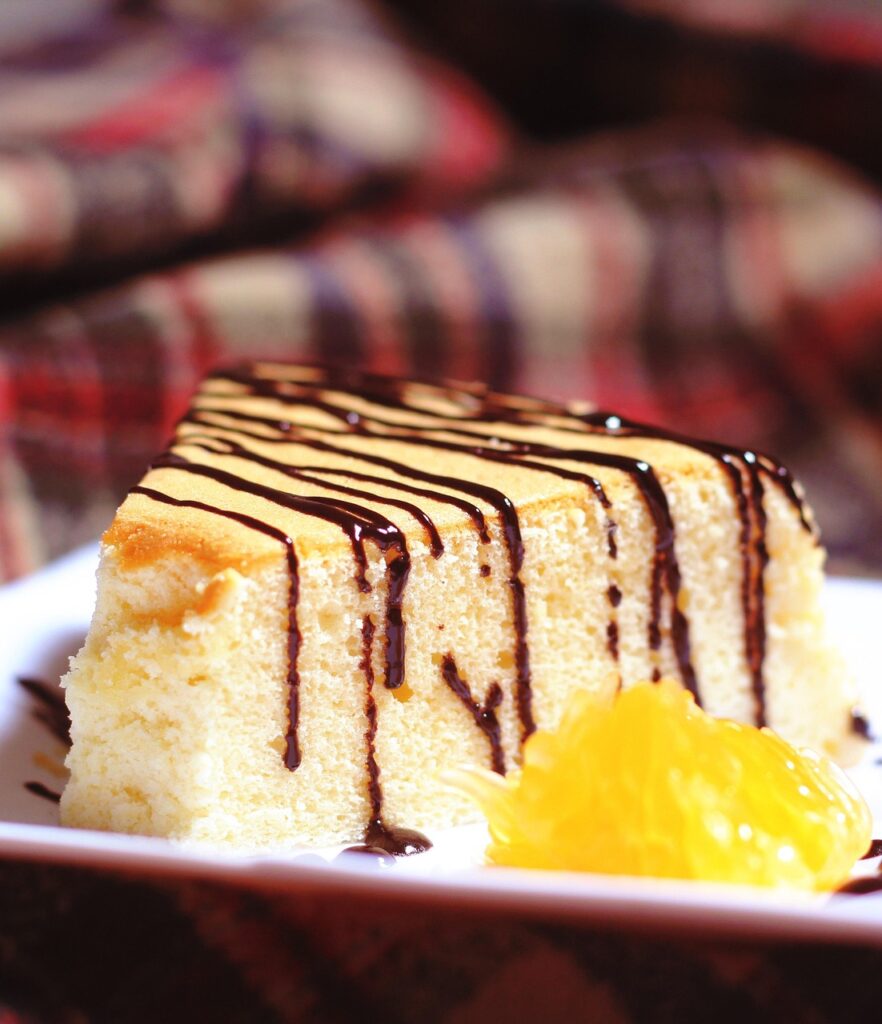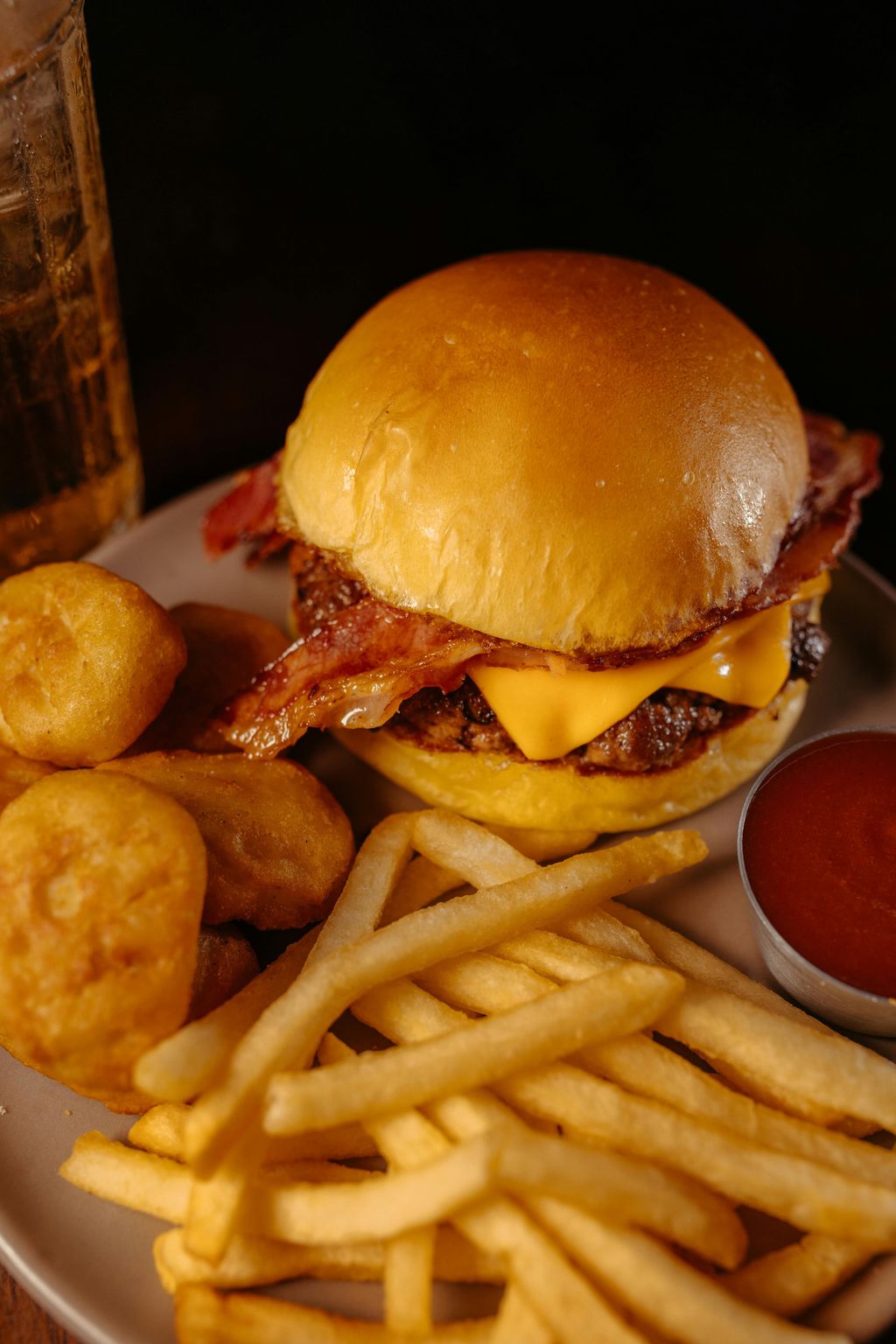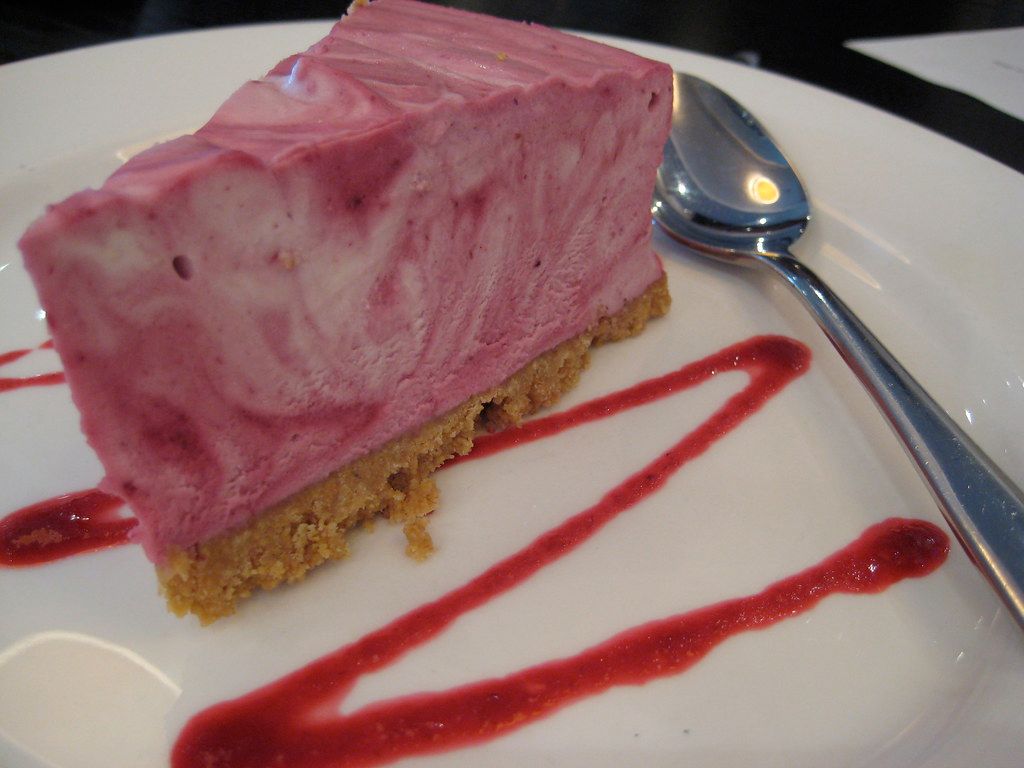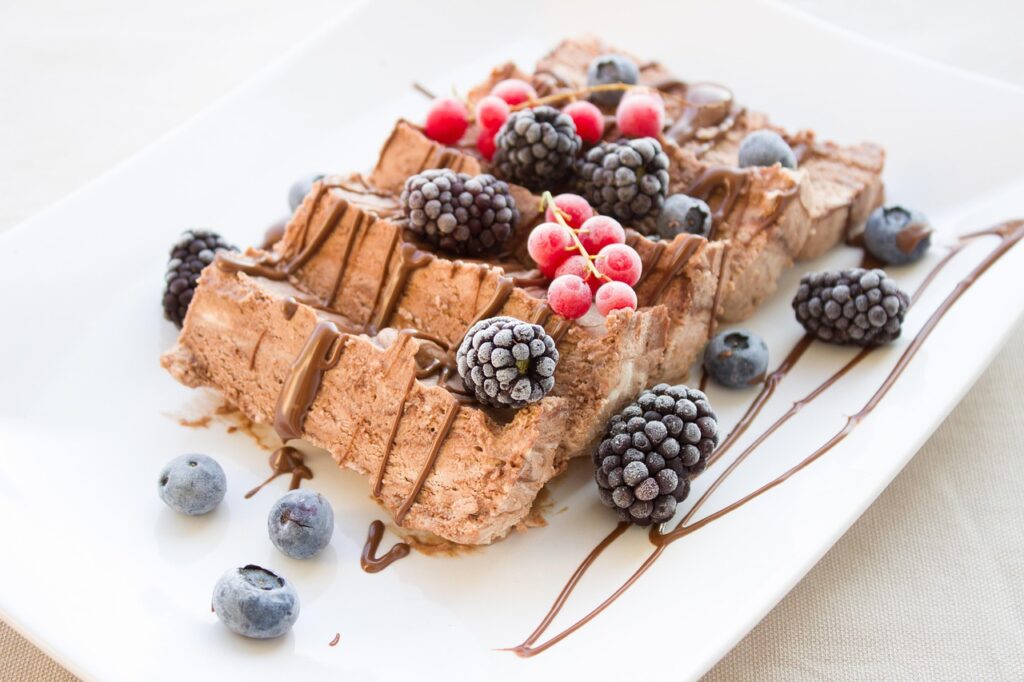
Okay, so you think you know desserts? You’ve probably got your go-to chocolate chip cookies, maybe a fancy lava cake, or even a classic cheesecake on rotation. But what if we told you that the dessert landscape your grandparents navigated looked *wildly* different? Just a few generations ago, our tables were graced with some truly… unique creations that have since slipped into the annals of culinary history. We’re talking about treats that satisfied sweet cravings in ways we can barely imagine today, from cakes made with tomato soup to ice cream that tasted like oysters (yes, really!).
It’s fascinating how quickly culinary trends come and go, isn’t it? One minute, a dish is a household name, and the next, it’s a forgotten relic, relegated to dusty old cookbooks. Recipes can lose their sparkle for all sorts of reasons: changing tastes, evolving lifestyles, or even shifts in economic contexts. Think about it – some desserts were born out of scarcity, thriving during tough times when ingredients were hard to come by. Once abundance returned, their appeal vanished faster than a freshly baked cookie at a kids’ party.
So, buckle up, sweet-tooth explorers! We’re about to take a delicious, slightly nostalgic, and definitely curious journey through the dessert graveyard. Get ready to discover some once-beloved confections that used to delight past generations in the U.S. but have since fallen out of favor. Prepare to be amazed, perhaps a little confused, and definitely hungry for a taste of history!
Now, let’s dive into the first seven vanished wonders!
1. **Chiffon Pie**While they were once superstars of the mid-20th century, chiffon pies have slowly, almost imperceptibly, become less relevant over the years. It’s a real head-scratcher why such an elegant dessert lost its sheen, especially when it was designed to be a more modern and airy alternative to those heavy cream pies that apparently reminded its inventor, Monroe Boston Strause (aka “The Pie King”), of cornstarch pudding. Imagine the culinary innovation back in 1926!
This light flavor and texture might be part of the reason for its decline, with today’s sugar seekers often reaching for richer, more decadent dessert alternatives like cheesecakes and lava cakes. But let’s not forget the sheer ingenuity that went into a chiffon pie. It was a marvel of its time, initially retailing for a mere $0.35, which, if you adjust for inflation, is about $5 today. Talk about a sweet deal for a slice of culinary artistry!
Typically lemon-flavored, though you could also find pumpkin and orange variations, a chiffon pie is a delicate dance of whipped egg whites folded into a sweet, gelatin-infused curd. This airy filling is then gently spooned into a crispy graham cracker pie shell and crowned with a generous dollop of whipped cream. Strause, the “Pie King” himself, was so passionate about his creation that he reportedly traveled 30,000 miles each year, sharing his pie-making wizardry with professionals in hotels and restaurants across the country. What a legacy for a dessert that now barely registers on our radar!
Read more about: From Silver Screen to Auction Block: The 15 Most Expensive Costume Designs in Film History (And the Intriguing Tales They Tell)

2. **Oyster Ice Cream**If the idea of oyster ice cream makes your eyebrows shoot up, you’re not alone! It might sound like an American culinary myth, but this unlikely pairing actually made its grand debut in 1824. Yes, you read that right – a recipe for this dessert was documented in “The Virginia Housewife: Or, Methodical Cook” by Mary Randolph, sharing pages with more familiar flavors like raspberry, strawberry, and chocolate. It truly was a different time for adventurous palates!
Randolph’s version of this intriguing treat wasn’t just a dash of oyster flavor; it involved preparing a rich oyster soup, complete with cream, onions, eggs, flour, and lean ham, before straining it and freezing it into a custard-like confection. We’re talking about a full-on savory base transformed into a frozen dessert. It’s safe to say that for most of us, oysters and ice cream go together about as well as chalk and cheese, which might just be why this dessert didn’t exactly stand the test of time and become a classic.
Despite its failure to achieve lasting popularity, oyster ice cream certainly earned its place in culinary folklore. Urban legends abound, with claims that George Washington was a huge fan and that Mark Twain even referenced it in “The Adventures of Tom Sawyer.” Sadly, both of those captivating tales are false. However, it’s not entirely gone: Chef José Andrés, in 2011, briefly resurrected oyster ice cream at his now-shuttered America Eats Tavern in Washington, D.C. He even spoke favorably of it to NPR, noting, “You will get that cream, with the beautiful oyster salty, briny flavor.” Perhaps it just needs the right chef to bring it back!
Read more about: No Brown M&Ms? That’s Just the Start! The 12 Wildest Demands Music Stars Make for Their Dressing Rooms

3. **Election Cake**Election cake wasn’t just some random dessert; its name holds a truly fascinating historical backstory! This confection first graced tables in New England during the 18th century, with a rather specific and surprising purpose: to promote candidates during election time. And here’s the kicker – since women weren’t allowed to vote back then, the idea was that they could use these elaborate cakes to encourage men to cast their ballots for their preferred candidate. Talk about a sweet form of political persuasion!
While the precise invention date remains a bit hazy, the roots of election cake can be traced back to desserts served by early settlers who journeyed to America from England. The very first recipe to appear in print for an election cake was found in Amelia Simmons’ “American Cookery” in 1796. These were no dainty cupcakes, either! At the time, these cakes were rather hefty, often weighing in at around 12 pounds. Can you imagine baking a 12-pound cake just to get someone to the polls?
Simmons’ monumental recipe called for an astonishing 30 quarts of flour, 14 pounds of sugar, 12 pounds of raisins, 10 pounds of butter, three dozen eggs, a pint of wine, and a quart of brandy. That’s a serious investment in a dessert! The defining feature, however, was the inclusion of dried fruit and spices, which gave it its distinctive flavor. By the 1820s, however, election cakes had started to shrink, both in size and popularity, eventually slipping off the culinary radar. It seems even delicious desserts couldn’t always win every vote.
Read more about: Digital Black Hole: 14 Essential Films You Can’t Stream (And What It Says About Hollywood)
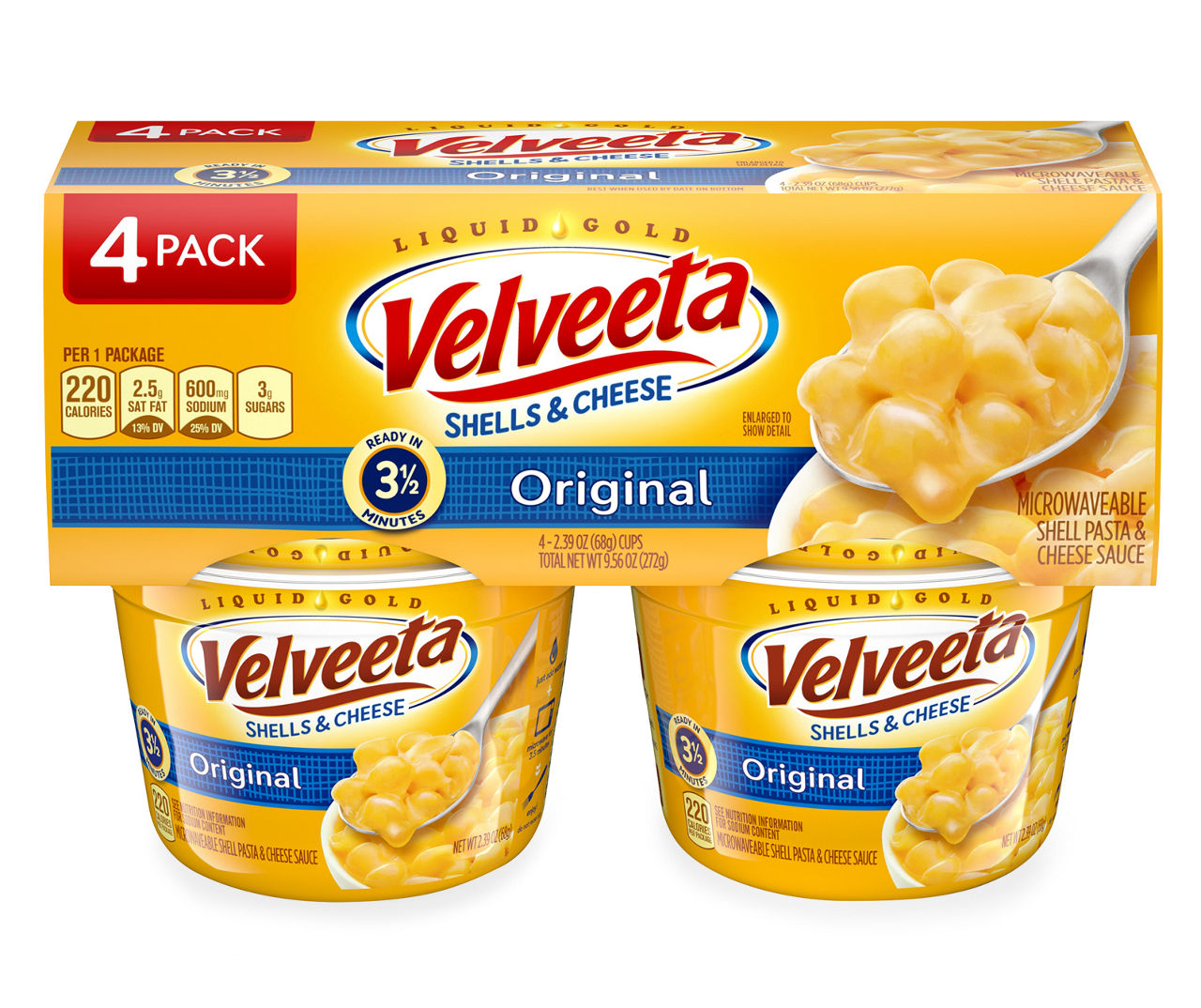
4. **Velveeta Fudge**Ah, Velveeta! Most of us have probably encountered this iconic Kraft product at some point, known for its intense orange hue and incredibly smooth consistency when melted. It’s a staple in creamy dips, sauces, soups, and, of course, mac and cheese. But imagine this: there was a time, not so long ago, when Velveeta wasn’t just for savory dishes. Oh no, it was the star ingredient in Velveeta fudge! If that doesn’t make you pause, what will?
While the exact invention date of this intriguing treat remains shrouded in a bit of mystery, it’s certainly reflective of the mid-20th-century American enthusiasm for all things processed. This fudge combines the famed Velveeta cheese with butter, sugar, cocoa powder, vanilla extract, and nuts. It sounds… well, it sounds *interesting*, doesn’t it? The thought of cheese in fudge is definitely a conversation starter, if nothing else!
According to the adventurous palates of Reddit users, the flavor of Velveeta in this recipe is so subtle that it’s barely detectable. One user hilariously recounted, “My grandpa used to make this. He acted like he was going to tell you a deep dark family secret and then he’d lean over and say, ‘It’s Velveeta!’ and then pretend he was some sort of master chef. I personally think it’s horrible.” So, while it might not have been a universally beloved classic, Velveeta fudge certainly left an impression, even if it was a slightly “horrible” one for some. It’s a testament to a time when cooks were truly experimenting with new ingredients!

5. **Tomato Soup Cake**Canned tomato soup, a pantry staple for many, is known for being affordable, shelf-stable, and incredibly quick to prepare. It’s a go-to for a comforting bowl on the fly, and a versatile base for dishes like pasta and casserole. But here’s where things take a truly unexpected turn: tomato soup has also been added to cakes! Yes, you read that correctly. Before you scrunch up your nose, remember that culinary history is full of surprises.
The recipe for tomato soup cake likely emerged in the 1920s, a time of significant culinary innovation and adaptation. While it hasn’t been officially confirmed, it wouldn’t be surprising if a company like Campbell’s introduced it to promote creative and perhaps unexpected uses for its ubiquitous soup. However, Campbell’s officially developed its own version, a “Steamed Fruit and Nut Pudding,” much later in the 1940s, featuring its condensed tomato soup along with figs, raisins, and nutmeats. Over the years, the company updated and renamed this recipe several times, showing its commitment to this unusual dessert.
Tomato soup cake truly hit its stride during the challenging years of the 1930s and 1940s, a period marked by the Great Depression and World War II when families often faced shortages of common baking ingredients. This resourceful cake offered a way to create a delicious treat when butter, eggs, and milk were scarce. As ingredients became more accessible in the 1950s, the recipe evolved to include eggs and frosting, transforming it further. Today, tomato soup cake is more of a nostalgic novelty, a quirky vintage recipe preserved in cookbooks for those daring enough to recreate a piece of culinary history, rather than a mainstream dessert for modern sweet cravings.
Read more about: Beyond the Fries: 15 Mind-Blowing Dishes You Won’t Believe Your Air Fryer Can Make!
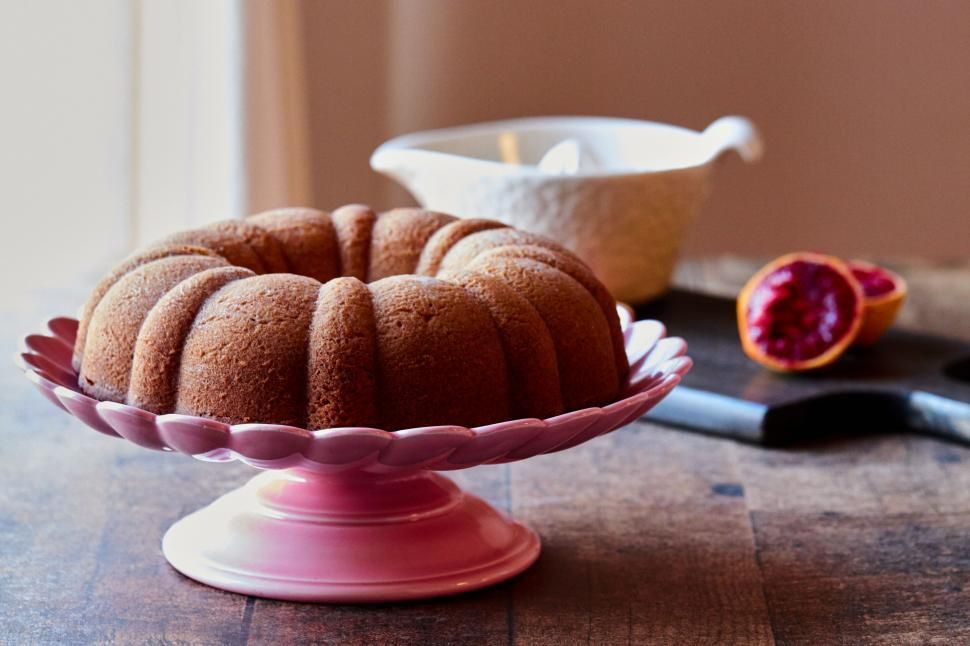
6. **Ration Cake**The very name “ration cake” conjures images of tough times, doesn’t it? And its other monikers – “war cake” and “depression cake” – certainly don’t lighten the mood! This dessert, as you might guess, has its roots firmly planted in periods of culinary hardship, when essential ingredients were either incredibly hard to come by or simply too expensive for the average household budget. It’s a powerful reminder of how ingenuity can blossom even in scarcity.
When governments enforced food rations to support the war effort during World War II, home bakers across the country were forced to get incredibly creative in their kitchens. And so, the ration cake was born, a true testament to human adaptability and a desire for a little sweetness amidst adversity. What makes it so remarkable is that it was made *without* many of the basic ingredients we now consider essential for a homemade cake, like butter, eggs, and milk. Imagine baking without those!
Instead of traditional ingredients, clever substitutes were employed. Vinegar and baking soda often stepped in to replace eggs, water stood in for milk, and lard, margarine, or even bacon grease filled the void left by butter. White cane sugar, another scarce commodity, was frequently swapped out for dried fruits, brown sugar, honey, or molasses, adding different layers of flavor. Cinnamon, nutmeg, and cloves were also sometimes added to enhance the taste, making these cakes surprisingly flavorful given their humble origins. While a necessity then, its appeal understandably waned when ingredients became plentiful again.
Read more about: Unearthing Forgotten Giants: The Neglected ’70s Trucks Only True Old-Timers Will Instantly Recognize
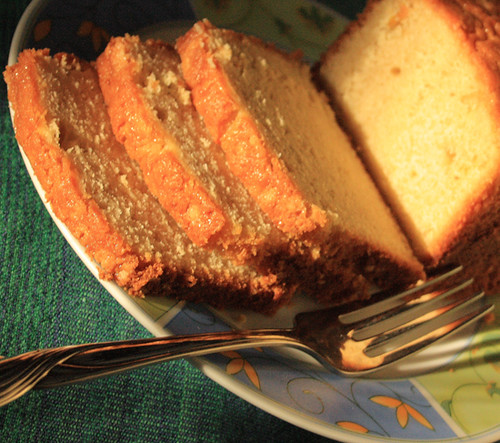
7. **Hot Milk Cake**Just as its name suggests, hot milk cake gets its distinctive character from its unique preparation method. This classic, though somewhat outdated, dessert involves a simple yet crucial step: heating milk and butter together before gently folding them into the cake batter. It’s a technique that contributes to the cake’s light and airy sponge-like texture, setting it apart from other traditional cakes.
The beauty of a hot milk cake lies in its relative simplicity, making it a favorite for home bakers of yesteryear. There’s no need for the fiddly separation of eggs or the precise temperature measurements of butter and milk that some other recipes demand. Its straightforward nature made it accessible to many. Other core ingredients typically include eggs, sugar, flour, and baking powder, forming a comforting and familiar flavor profile.
Recipes for hot milk cake first started appearing in print in the early 1900s, but it truly found its moment in the sun during the 1930s. During this era, its ease of preparation, quick baking time, and most importantly, its inexpensive ingredients and versatility, made it a go-to treat for families navigating limited budgets. Milk powder was even often used as a stand-in for fresh milk when that too was scarce. While delicious on its own, its spongy texture made it an excellent base for various toppings like fresh berries, whipped cream, or frosting, and it was even used to create other classics like Boston cream pie or Victoria sponge cake. It was a true workhorse of the dessert world!
Alright, sweet seekers, you’ve journeyed through the first seven culinary ghosts. But hold onto your spatulas, because we’re not done yet! The dessert graveyard is vast, and there are more forgotten gems waiting to be unearthed. From grand spectacles that graced fancy dining tables to humble treats that brought comfort to countless homes, these next seven desserts truly have unforgettable stories. Let’s dig in and discover why they once reigned supreme and then, well, just sort of vanished!
Read more about: The Future is Flavorful: 14 Cutting-Edge Food Trends Set to Dominate Your Plate in 2025

8. **Baked Alaska**If you’ve ever seen a Baked Alaska, you know it’s not just a dessert; it’s a showstopper, a magic trick in edible form! Imagine combining ice cream and sponge cake, then encasing it all in a fluffy meringue shell before quickly browning it in a hot oven. The pure genius lies in the contrast: a warm, toasted exterior giving way to a surprisingly cold, creamy interior. It’s an edible paradox that thrilled diners for decades.
This magnificent creation actually owes its existence to a scientist, Sir Benjamin Thompson, also known as Count Rumford. He discovered that whipped egg whites were fantastic insulators. This scientific insight inspired French chefs to create a similar confection called ‘omelette norvégienne,’ featuring ice cream and cake covered in warm meringue. Pretty cool, right?
But how did it become the ‘Baked Alaska’ we know (or used to know)? Well, the name itself is a tribute to America’s acquisition of Alaska from Russia in 1867. Charles Ranhofer, a former Parisian pastry chef at New York City’s Delmonico’s restaurant, commemorated this historical event by including his version of the omelette norvégienne on the menu, calling it ‘Alaska, Florida’ to highlight the temperature contrast between its components, just like the two states.
While it’s unclear when ‘Alaska, Florida’ officially became ‘Baked Alaska,’ the dessert was already appearing under this more familiar name in Fannie Farmer’s 1896 ‘Boston Cooking-School Cook Book.’ For a long time, Baked Alaska was a staple on fine dining menus, celebrated for its customizable flavors and its theatrical presentation. Yet, its complex preparation and the rise of simpler ice cream cakes sadly led to its disappearance from most modern menus, turning a grand spectacle into a rare treat.
Read more about: Unlock a Year of Birthday Bliss: 14 Must-Know Freebies from Your Favorite Restaurants and Retailers!

9. **Mock Apple Pie**Sometimes, necessity isn’t just the mother of invention; it’s the mother of some truly wild, yet surprisingly delicious, culinary hacks. Enter the Mock Apple Pie, a dessert that became immensely popular during World War II when actual apples were both scarce and expensive. What’s the secret ingredient for this apple-less wonder? Get ready for it: Ritz crackers! Yes, those buttery, flaky crackers stepped in as the unlikely stand-in for fruit.
It sounds absolutely bizarre, doesn’t it? But here’s the magic: when broken into pieces and layered with lemon, sugar, and cinnamon, these humble crackers would soften during the baking process, remarkably taking on the texture of baked apples. It was a clever workaround that allowed home bakers to still enjoy a taste of ‘apple’ pie, even when the real deal was out of reach.
Funnily enough, the concept of mock apple pie actually predates the iconic Ritz cracker itself. Ritz crackers didn’t hit the market until the 1930s, but early recipes for this ingenious pie were already circulating by the mid-19th century. The earliest known recipe, dating back to 1857, called for bread crumbs as the main ingredient, showing that resourceful cooks were long accustomed to finding creative solutions.
By 1869, many recipes had shifted to using soda crackers for the filling. The mock apple pie truly received an upgrade when Ritz crackers arrived, adding their signature buttery and flaky texture to the filling. The National Biscuit Company (now Nabisco) even recognized its genius, printing the recipe for the dessert right on Ritz cracker boxes during the Great Depression for easy reference. Talk about a dessert that adapted and evolved with the times!
Read more about: You Won’t Believe How These 15 Horror Flicks Fumbled Their Endings
10. **Potato Candy**Now, this one might make you do a double-take: potato candy. We’re talking about the same savory spuds that give us french fries and hash browns, suddenly making an appearance in a sweet confection. It’s a truly unexpected pairing of ingredients that, against all odds, created a surprisingly delicious dessert that became a hit, particularly during tough economic times.
While the exact birthdate of potato candy is a bit murky, its popularity soared during the Great Depression. Why? Because it was incredibly affordable, usually requiring just three humble ingredients: potatoes, peanut butter, and powdered sugar. When budgets were tight and treats were a luxury, this simple sweet offered a much-needed moment of indulgence.
Of course, like many beloved home recipes, variations abounded. Some adventurous cooks added extra confectioners’ sugar, shredded coconut, a splash of vanilla, or even a hint of chocolate to elevate their potato candy. It’s a testament to how creative people can get when trying to make something special out of everyday pantry items.
And here’s a fun fact: don’t confuse potato candy with ‘Irish potato candy’! Despite the name, Irish potato candy contains neither potatoes nor Irish origins. That delightful creation, made from cream cheese, sugar, butter, and coconut, rolled into balls and coated with cinnamon, was actually created in Philadelphia, Pennsylvania, in the late 19th or early 20th century, likely by Irish immigrants. So, two different vanished (mostly!) dessert legends!
Read more about: Unmasking the Sugar Traps: 14 Unexpected Foods Secretly High in Sugar (and How to Avoid Them)
11. **Hermit Cookies**Ever wondered why a cookie would be named ‘hermit’? Well, according to some delightful accounts, these spiced, chewy treats earned their moniker because they had an incredible superpower: they kept for a long time without going stale! This made them perfect companions for sailors and fishermen embarking on long voyages across the New England coast, which is where they are thought to have originated.
The Republican newspaper, back in 1888, even sang the praises of hermit cookies, reportedly stating, “This will keep for months, if out of humanity’s reach, hence, perhaps their name.” It’s a charming image, isn’t it? A delicious, durable cookie waiting patiently for its moment to be enjoyed, almost like a solitary recluse. Beyond their impressive shelf life, these cookies won legions of fans thanks to their rich, spiced and fruity flavor, coupled with a wonderfully satisfying chewy texture.
Traditionally, hermit cookies were made in a drop-cookie style, generously packed with comforting ingredients like brown sugar, dried fruits such as raisins or currants, and a warm blend of spices including cinnamon, nutmeg, and cloves. Sometimes, they even included a handful of nuts, like pecans or walnuts, adding another layer of texture and flavor to these already irresistible bites.
For those who preferred a slightly different take, hermit cookies could also be made with molasses, then sliced into bars after baking. This little tweak in the recipe and preparation method resulted in a softer texture with delightfully chewy edges, offering a different, yet equally beloved, experience. While you might be hard-pressed to find them in modern cookie jars, these spiced beauties definitely deserve a comeback!

12. **Ammonia Cookies**The name ‘ammonia cookies’ might sound a little… industrial, but trust us, it refers to a fascinating chapter in baking history! These cookies get their distinctive name from their main ingredient: baker’s ammonia. Also known as ammonium carbonate, this was once a widely used leavening agent in old-fashioned baking, giving cookies a wonderfully light and crisp texture that was highly prized.
While baker’s ammonia worked wonders for crisp cookies, it wasn’t quite ideal for softer baked goods. Plus, there was one little quirk: it gave off a rather strong odor during baking. This meant that tasting the dough or even opening the oven door during the process could be quite an “unpleasant” experience, to say the least! It’s actually why baker’s ammonia once doubled as smelling salts – talk about a versatile ingredient!
Ammonia cookies aren’t just one specific type of dessert; rather, the term encompasses a range of traditional recipes that embraced this old-school ingredient. One of the most popular versions hails from Poland, where they are known as ‘ciasteczka amoniaczki.’ These delightful treats capture the essence of what baker’s ammonia could achieve.
The Polish ‘ciasteczka amoniaczki’ typically consist of sour cream, flour, sugar, butter, eggs, and vanilla, alongside the star leavening agent. While baker’s ammonia has certainly passed its heyday in mainstream American kitchens, it hasn’t entirely vanished. It still makes appearances in several other traditional dessert recipes around the world, including Swedish drömmar and Hungarian kvircedli, proving that some ingredients, no matter how quirky, just refuse to be completely forgotten.
Read more about: Discovering Top Online Retailers: Your Guide to Alternatives Beyond Amazon
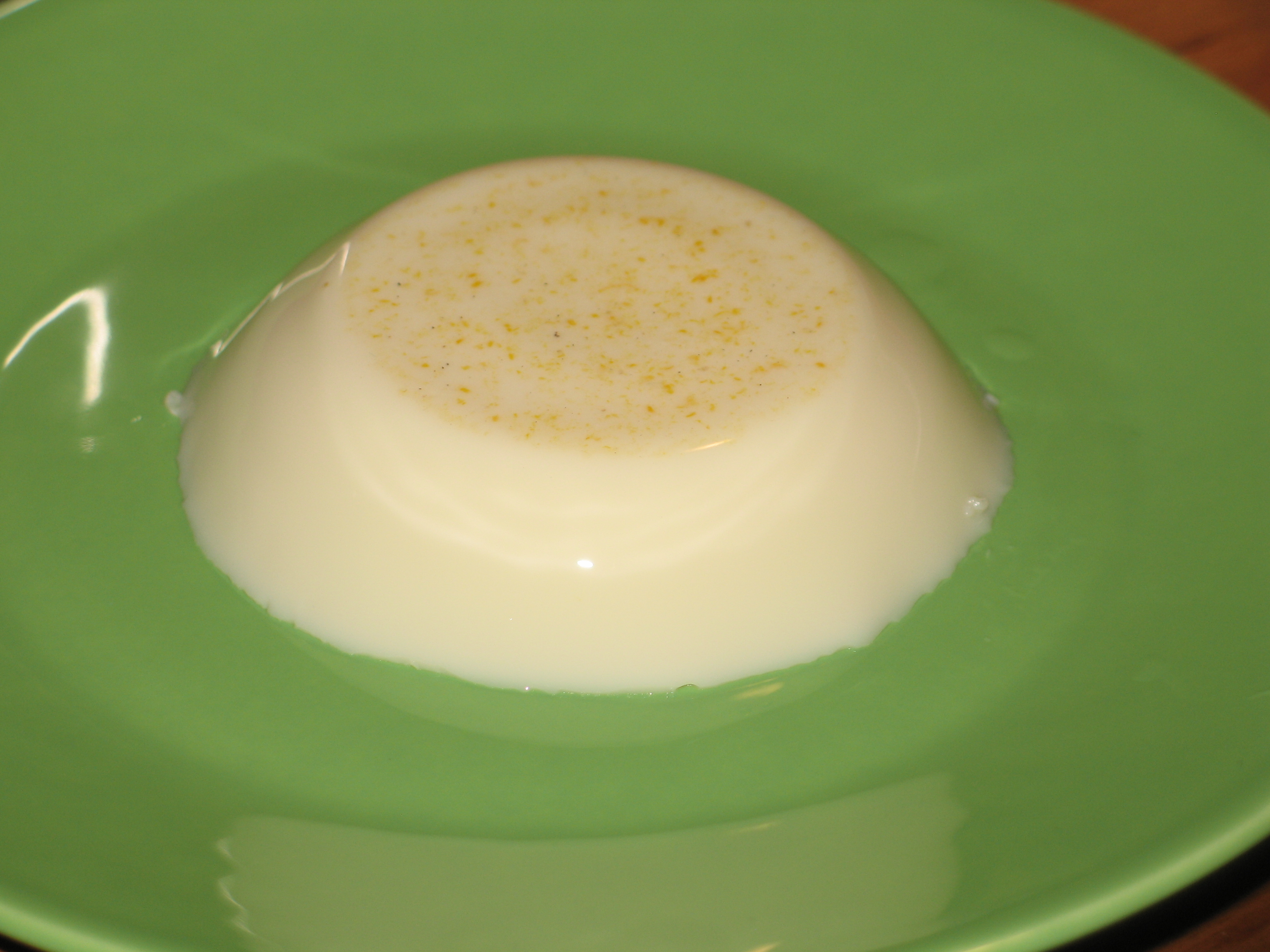
13. **Blancmange**With a name as elegant as its texture, blancmange is a dessert that whispers of history. This sweet, almond-flavored jelly has a fascinating lineage, evolving from medieval roots. Originally, ‘blanc mange,’ which translates to ‘white food’ in French, was a savory medieval stew made with rice and almonds, often served with chicken or fish. Talk about a culinary glow-up! Over time, it shed its savory past and transformed into the creamy, sweet blancmange we’re discussing.
The very first recipe for blancmange in its sweet dessert form can be traced back to the early 17th century. From there, its popularity soared, especially across Europe, gracing tables with its subtle sweetness and refined, creamy consistency. It truly was a symbol of understated elegance. But why stop at just white? The recipe continued to evolve, and chefs began to add vibrant colors to the pudding.
Imagine saffron or egg yolks creating a beautiful yellow hue, spinach juice for a soft green, or even cochineal to turn it a striking red! These colorful variations must have made blancmange a feast for the eyes as well as the palate. Then, in the 19th century, another significant shift occurred: the almonds, which had been a defining feature, gradually disappeared from the confection, and gelatin took the place of isinglass (a natural form of collagen).
Today’s recipes for this sweet treat still vary, but it generally features cornflour, milk, sugar, and delicate flavorings like vanilla, rosewater, or lemon. If you’ve ever had panna cotta, you’d find blancmange to be a firm, pudding-like treat with a similar vibe. While it might have been overshadowed by more flashy, colorful, and complex desserts in modern times, blancmange’s legacy as a classic continues to inspire chefs worldwide, reminding us that sometimes, less truly is more.
Read more about: Remembering the Stars: 12 Icons We Said Goodbye To in Early September 2025

14. **JELL-O Poke Cake**For those of us who remember a time when JELL-O tried to gel everything from fruit to vegetables (yes, really!), it might come as a pleasant surprise that they also wanted their colorful gelatin to get into *more* dessert recipes. So, in the groovy 1970s, JELL-O had a brilliant idea: the poke cake! The concept was simple yet revolutionary: bake a cake, poke a bunch of holes in it, and then fill those holes with flavored gelatin.
The result? A visually striking, incredibly moist, and wonderfully colorful cake that was unlike anything else on the potluck table. Imagine slicing into a vanilla cake and finding vibrant streaks of red cherry, green lime, or blue raspberry JELL-O running through it – it was pure edible fun! This ingenious idea caught on like wildfire, proving that sometimes the simplest concepts are the most engaging.
JELL-O poke cakes became a massive fad, dominating dessert tables and community gatherings all through the 1980s. They were easy to make, relatively inexpensive, and offered a burst of color and flavor that appealed to everyone. It was the kind of dessert that screamed ‘party time’ without requiring hours of fancy baking.
However, like many fads, the intense interest in gelatin poke cakes eventually faded, making way for new dessert sensations. Today, you don’t see the classic JELL-O poke cake quite as often, but its spirit lives on! Modern variations sometimes pop up with more sophisticated, even exotic, ingredients like Champagne or bourbon, giving this nostalgic treat a grown-up twist. It just goes to show, you can’t keep a good dessert concept down forever!
Whew, what a delicious, slightly melancholic journey we’ve been on! From election cakes designed to sway voters to ice cream that tasted like oysters (still processing that one, TBH!), and from elegant Baked Alaskas to the humble ingenuity of potato candy, our tables were once laden with an incredibly diverse array of sweet treats. It’s truly wild to think how quickly culinary trends come and go, with some once-beloved confections vanishing as if they were just a sweet dream.
Read more about: A Delicious Blast from the Past: Discontinued Childhood Foods We Seriously Miss (and Still Dream About)
But uncovering these forgotten desserts isn’t just a trip down memory lane; it’s a peek into the evolving tastes, economic realities, and sheer creativity of generations past. Each vanished dessert tells a story, a delicious little piece of history waiting to be rediscovered. So, the next time you’re whipping up a batch of your favorite cookies or eyeing a modern pastry, spare a thought for these bygone beauties. Who knows, maybe one day, with a little curiosity and a dash of kitchen magic, we might just bring one of these classics back to life and make it the next big thing! After all, isn’t that the sweetest kind of resurrection?

